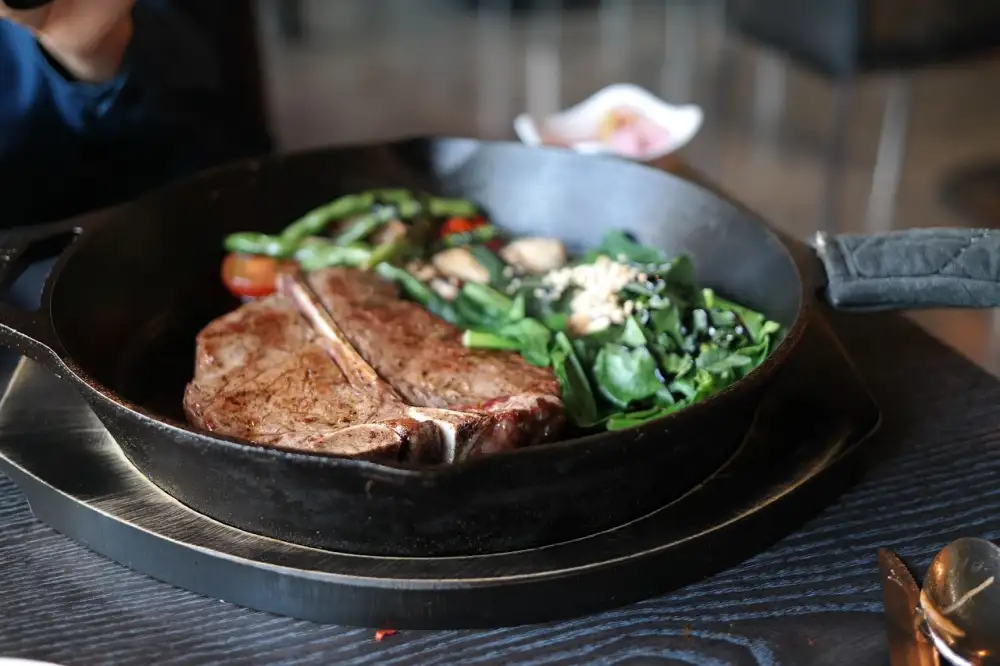Revitalize Your Home Cooking with Our Expert Tips for Cleaning a Cast Iron Skillet

Cleaning a cast iron skillet is an essential step in maintaining its longevity and ensuring delicious meals every time. Cast iron skillets are known for their durability and ability to retain heat, but they require special care when it comes to cleaning. In this article, we will share expert tips on how to revitalize your home cooking by properly cleaning your cast iron skillet. From gathering necessary supplies to removing stubborn stains and rust, we've got you covered. So let's dive in and discover the secrets to keeping your cast iron skillet sparkling clean!
Gather necessary supplies for cleaning
To properly clean a cast iron skillet, it's important to gather the necessary supplies beforehand. Here are the items you'll need:
1. Mild dish soap or cast iron cleaner: Look for a gentle cleanser specifically designed for cast iron cookware.
2. Non-abrasive scrub brush or sponge: Avoid using harsh scrub brushes that can damage the seasoning of the skillet.
3. Paper towels or clean cloth: These will be used to dry the skillet after cleaning.
4. Coarse salt or baking soda: These natural abrasives can help remove stubborn food residue without damaging the skillet's surface.
5. Vinegar or lemon juice: These acidic ingredients are effective in removing rust spots from the skillet.
6. Cooking oil or shortening: This will be used to season and protect the skillet after cleaning.
By having these supplies ready, you'll be well-prepared to tackle any dirt or grime on your cast iron skillet and restore it to its optimal condition.
Preparing the cast iron skillet for cleaning
Before you start cleaning your cast iron skillet, it is important to properly prepare it. First, ensure that the skillet has cooled completely before handling. Next, remove any food residue or debris from the surface using a stiff brush or scraper. Be gentle to avoid scratching the seasoning. If there are stubborn bits stuck on, you can use coarse salt and a paper towel to scrub them away. Once the surface is clean, rinse the skillet with warm water and wipe it dry with a clean cloth. Now your cast iron skillet is ready for the next step of cleaning!
Cleaning the cast iron skillet using gentle methods
Cleaning the cast iron skillet using gentle methods is crucial to maintain its seasoning and prevent damage. Start by rinsing the skillet with warm water, avoiding harsh soaps that can strip away the seasoning. Use a soft sponge or brush to gently scrub away any food residue. For stubborn bits, create a paste using kosher salt and water, and gently scrub the skillet with it. Rinse thoroughly and dry immediately to prevent rusting. Avoid soaking the skillet or using abrasive cleaners, as this can damage the seasoning.
Removing stubborn stains and rust from the skillet
Removing stubborn stains and rust from a cast iron skillet can be a challenge, but with the right techniques, you can restore it to its former glory. To tackle stubborn stains, start by sprinkling coarse salt onto the stained areas. Then, use a damp cloth or sponge to scrub the salt into the stain, applying gentle pressure. The abrasive nature of the salt will help lift off the stain without damaging the skillet's surface. For more stubborn stains, create a paste using equal parts baking soda and water. Apply this paste to the stain and let it sit for a few minutes before scrubbing with a sponge or brush. If your skillet has developed rust spots, don't worry! Simply make a paste using equal parts lemon juice and salt and apply it to the affected areas. Let it sit for about 10 minutes before scrubbing with a brush or sponge. The acidity of the lemon juice will help dissolve the rust while the salt acts as an abrasive agent. Remember to rinse thoroughly and dry immediately after removing stains or rust to prevent further damage or reoccurrence.
Drying and seasoning the cast iron skillet
Drying and seasoning the cast iron skillet is an important step to ensure its longevity and prevent rust. After cleaning, use a clean towel or paper towels to thoroughly dry the skillet. Make sure there is no moisture left on the surface. Next, place the skillet on a stovetop burner set to low heat for a few minutes to evaporate any remaining moisture. Once completely dry, it's time to season the skillet. Apply a thin layer of vegetable oil or melted shortening to the entire surface of the skillet, including the handle. Use a paper towel to spread the oil evenly and remove any excess. Place the skillet upside down in an oven preheated to 350°F (175°C) for about one hour. This process will create a protective layer that prevents food from sticking and helps maintain the skillet's non-stick properties. After seasoning, allow the skillet to cool completely before using or storing it. With proper drying and seasoning, your cast iron skillet will be ready for many more delicious meals!
Storing the skillet properly to maintain its cleanliness
Storing the skillet properly is crucial to maintain its cleanliness and prevent any damage. After cleaning and drying the skillet thoroughly, make sure it is completely cool before storing. Avoid stacking other heavy items on top of it, as this can cause scratches or cracks. To prevent moisture buildup, place a paper towel or clean cloth inside the skillet to absorb any excess moisture. Finally, store the skillet in a dry and well-ventilated area away from humidity or moisture sources. By following these storage tips, you can ensure that your cast iron skillet stays clean and ready for your next delicious meal.
By following these expert tips for cleaning a cast iron skillet, you can revitalize your home cooking and enjoy the many benefits of a clean skillet. Not only will a clean skillet enhance the flavors of your dishes, but it will also ensure even heat distribution and prevent any unwanted flavors from previous meals. With proper care and maintenance, your cast iron skillet will become a reliable kitchen companion that lasts for generations. So, don't hesitate to give your cast iron skillet some well-deserved TLC and experience the joy of cooking with a perfectly cleaned and seasoned pan. Happy cooking!
Published: 22. 01. 2024
Category: Home



